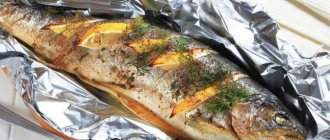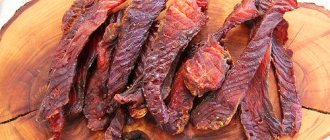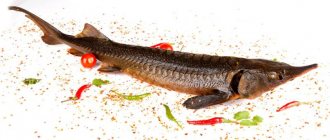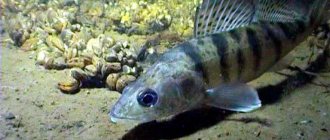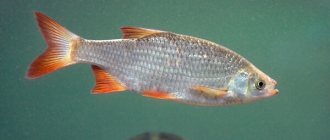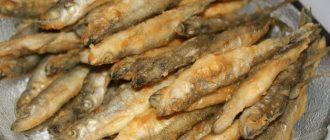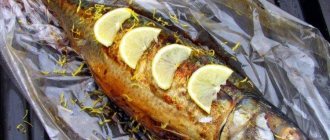Description and habitats
The whitefish got its name from the color of its meat, which is white, so many are surprised that it is classified as a member of the red fish family. Like nelma, whitefish is a member of the whitefish family. This is a predator that feeds on small inhabitants of the underwater world and grows up to 130 cm in length and weighs up to 14 kg. Male whitefish are significantly smaller than females.
The body of the white fish is long and flattened on the sides, the back is bluish-brown in color, the abdomen and barrels are silver. The fins are gray, and only the tail and dorsal fin are brownish-gray.
The lifespan of this fish is about 10 years. Previously, it was found in the Volga-Caspian basin, where it came from the northern seas, but due to environmental changes and industrial development, the whitefish ceased to be found in the Volga-Caspian basin. The ban on its fishing has existed since Soviet times. Similar in description, fat content and quality of meat to white fish, nelma is found in the northern rivers of Siberia. Sometimes nelma can migrate to the Volga or Ural.
White fish, like nelma, has very tender and fatty meat. Sexual maturity in this fish occurs at 6-7 years of life, which largely became the reason for the disappearance of the white fish from the Northern Caspian Sea due to uncontrolled fishing of young individuals.
The fish was distinguished by cautious behavior and always lived at depth. Whitefish meat is one of the most valuable delicacies. Due to the fact that the fat content of this fish is high - 18-26%, it was never frozen, but cooked immediately, since it spoils very quickly. White fish, like sturgeon, is prohibited from catching; its meat, like sturgeon, is a very expensive delicacy.
Fish "Belorybitsa" photo and description
WHITE FISH – Coregonus lencichtys. Along the Volga and Urals - white fish, white fish, white fish; in Astrakhan - white stork, barn stork; on Sura - heater; Kaz. tat. – ak-balyk; cherry – school; vog. – unzh; Here. – podgerik; Chuvash – shoripol; Kalm. - Tsebyn. Var. Nelma. In the north and in Siberia - nelma, nelmina; young - nelmushka; at Kachinsk tat. – tul-balyk; vog. and birches. Ostyak - unzh, duck; Ostyak – chest; in Surgut - samon-kul; on Narym - uenche; on the river Kaz – sul; ost. myself. – Venda; Samoyedsk – syauta and yuratsk. – syavotta, adde; Yakutsk – here-balyk, yrym-balyk, anty; Yukaghirsk – chamaney; Aleut. – kakidok; Buryat – tolo, tung. - Nera.
White fish belongs to the whitefish and is the largest and at the same time the most delicious and valuable species. In addition to its size, it is easily distinguished from other whitefish by the fact that, like vendace, its lower jaw is longer than its upper. Its body is very elongated, spindle-shaped, somewhat slab-like, brownish-blue above, silvery on the side, white below; the dorsal and caudal fins are brownish-gray, the others are whitish, gray or blackish towards the apex; the eyes are silver with a yellowish tint. The size of the white fish is very significant: in the Volga it often weighs from 12 to 18 pounds, but sometimes reaches a height of more than 3 feet and a weight of 30 to 40 pounds; According to the testimony of Saratov fishermen, sometimes white fish are found even 2 arshins in length and 2 pounds in weight, but this is hardly true. Males are always noticeably smaller than females. Barn males, called storks in Astrakhan, have a slightly different appearance and are very similar to the northern and Siberian variety of white fish, known as nelma and considered by many to be a special species. However, judging by the descriptions of the famous traveler of the last century Lepekhin and prof.
Kessler and taking into account the similarity of nelma with the barren male white fish, it is more correct to accept that the latter originated from nelma and became isolated in the Caspian basin after the separation of the Caspian Sea from the Arctic Ocean. The main differences between nelma and white fish are that its head is noticeably longer, its eyes are larger, they are further away from the top of the nose and there is one less ray in the pectoral fins, and three more rays in the anus. The same is observed in the stork, so perhaps the latter is a salmon that entered the Caspian Sea through the northern canal that connected the Kama with the Northern Dvina basin. And his infertility can be explained by the fact that he has not yet had time to adapt to water and other conditions. It is strange, however, that there seem to be no females among the storks.
Both nelma and white fish are migratory fish, that is, they live in the sea and rise into the rivers for some, albeit quite long, periods of time. Nelma is found in all large northern rivers: the Dvina with its tributaries, Pechora, Usa, Onega, from where it enters some lakes, for example. lake Lache, Kubenskoye, etc. In Siberia, nelma, as its local names alone show, is found in all or almost all rivers, especially in the river basin. Ob, where it rises very high along secondary and even small rivers, although it does not go as far as the Talmen. The true whitefish lives only in the northern parts of the Caspian Sea, from where it rises to the Volga, Terek and, in much smaller numbers, to the Urals; in the Caucasian and Persian rivers it is not present at all, also in the Aral Sea and Syr Darya. In the Volga basin it reaches very high - to Tver and Rzhev, in the Oka - to Serpukhov and Kaluga (Gyldenstedt), in Sura (Steel) and in Sheksna - to Beloozero, but Kessler’s opinion that the Cholmuzh whitefish of Lake Onega is identical with the whitefish, according to Danilevsky's research is incorrect, since this whitefish belongs to a special species. A whitefish over 35 pounds was once caught in Lake Mstino, and it must be assumed that it came here through Tvertsa and the Vyshnevolotsky Canal. But in general, in the upper, even middle Volga (above Kazan), this fish is now very rare and is caught by chance, which depends most of all on changes in the temperature of the upper Volga caused by the destruction of forests and shallowing of the river. Meanwhile, in Rybinsk, under Tsar Alexei Mikhailovich, each of the 50 so-called. the palace fishermen were obliged to deliver 20 white fish annually (except for 30 sturgeon and 85 sterlet), which is currently completely unthinkable; In Yaroslavl, special large-mesh nets were also made, called ohana and intended specifically for catching whitefish.
A much larger number of whitefish rises to the Kama. Many fish farmers consider it even more Kama than Volga fish, and they say that, having risen along the lower Volga to the mouth of the Kama, it heads mainly to this latter river, giving preference to the colder Kama water. Here it also rises into the side rivers: Ufa, Belaya, Chusovaya and Vishera. In all likelihood, its spawning occurs in these rivers, which, like all whitefish, takes place in the fall - in September. In the lower reaches of the Volga it is unlikely to spawn, since there are no stone ridges on which it releases eggs. My observations of nelma in the river also agree with this. Sosva, Bogoslovsky district. In general, both the one and the other love cold, deep water, but at the same time not particularly fast, and constantly stick to the bottom of the river; at least the nelma is afraid of the rifts and in Sosva does not reach them (to the village of Maslovskaya). There is only rather confusing information regarding the spawning time and lifestyle of the whitefish. In the upper Volga, according to some, it spawns around September 8, according to others - in October, after Intercession (the same in the Kama) and, moreover, within two weeks. In the lower Volga, according to Ovsyannikov and Yakovlev, it appears in October and lasts all winter, but its main movement is in February and early March, before the opening of the river. She chooses the widest branches and walks under the very ice, against a fairly strong current. During the rest of the year, whitefish are not found in the estuaries. Thus, together with prof. Kessler must accept that it enters the Volga mainly at the end of winter, does not stay in the lower Volga, but goes more to the middle Volga, especially the Kama, spends the summer there at depth, in pits, and comes out to spawn in the fall, but in different places in different time; then it rolls down and again, in smaller quantities, reaches the sea in October and November. Previously, the white fish's move was much more correct, but now, as they say, it moves in vain, without any definite order. Apparently, white fish do not enter the rivers in very large numbers; at least it is rarely possible to capture a lot of it at once in the lower reaches of the Volga, where the main catch is carried out in Bakhtemir, one of the branches in the fisheries of Prince Dolgoruky. It is found in even smaller quantities in the upper Volga and Kama, even during spawning, so that it spawns, if not in families, like pike, then in very few schools. This is confirmed by observations of nelma, which, although, according to Lepekhin, enters the Ob “in terrible numbers,” but at the spawning sites - in Iset, Pyshma, Miyas, Tura, Tavda, Sosva and Lozva - it is caught more alone.
A very remarkable phenomenon is that juvenile white fish are almost completely unknown to Volga fishermen. The latter almost unanimously showed Ave. Kessler that they had never come across a white fish smaller than 7, even 10 pounds, and only in Novy one fisherman told him that they also found the smallest white fish. In all likelihood, the juveniles, like sturgeon fry, roll down the river into the sea during the spring flood and emerge from there only when they reach adulthood, precisely when they reach at least 7 pounds in weight. Some fishermen, however, explain this phenomenon by the unusually rapid growth of the whitefish and claim that its juveniles reach the size of a dace in one week and become adults in one year (in Saratov there is even a saying: “the whitefish grows like a sheep”), but, of course, this opinion is without any basis.
The average size of nelma, like white fish, is up to 18 pounds, but there are specimens up to a pound (Irtysh) and even up to 50 pounds. (Yenisei).
We still have somewhat more detailed information about the life of the Siberian whitefish. We know that the bulk of nelma come from the Arctic Sea in the spring, but that many individuals are found in rivers all year round, rising to secondary tributaries at the end of summer to spawn. Nelma rises into the river faster than other fish and by Peter’s Day even appears, for example, in the tributaries of the Black Irtysh. At first it travels in large flocks, certainly along the riverbed, in the deepest and fastest places; Most of these schools consist of young fish (7-10 pounds) - three years old. In large rivers, nelma never spawn, but enter small rivers for this purpose, avoiding, however, like whitefish, very fast-flowing and rapids. In all likelihood, these fish, like other migratory fish, spawn where they hatched. There is some reason to believe that, having reached their native rivers, flocks of nelma stop at the mouths; Thus, for example, it is known that in the tributaries of the Black Irtysh (Kaldzhir, Belshekhe and Buurchum) nelma stand for some time “in dense rows in several tiers.”
Spawning itself does not occur in schools, but in families or in pairs, like pikes, in September or at the end of August. Potanin says that Charysh fishermen (in Altai) often, during fishing, have the opportunity to observe the movement of nelma to spawn. They walk in pairs or threes and all along the same path; sometimes the female is so heavy that she is not able to walk against the current, and two males support her from the sides, squeezing her with their sides. That’s why the beamers always throw a spear at the side; the other male runs away, and the female, left by them, is unable to hide or even cope with the current and turns over with her belly up.
The eggs are spawned in deep and fast places, on stones and cartilage, and are eaten in large numbers by graylings. In September and no later than October (in the Northern Urals), nelma begins to slide down, but this slide occurs very slowly, and it is quite possible that some individuals remain in the river for at least a year, or even never go to sea at all.
Young nelma appear in large numbers after the ice breaks up (Yenisei) and, presumably, go to sea in the spring. After spawning, in late autumn and winter, nelma is often found in quiet, muddy places, in creeks abounding in small fish (rarely 4-5 inches in length), which constitute its main food; in addition, she devours a lot of grayling caviar. According to the observations of Sosva fishermen, nelma always walks in the depths, without appearing on the surface, feeds at night and at sunrise and sunset; she is very afraid of noise and is perhaps the most cautious and timid fish.
On Sosva and Lozva nelma are caught using the so-called. a path - an artificial fish made of an iron, somewhat curved plate with a piece of red cloth at the opposite end; This plate is tied to a string (14-20 fathoms long), which is placed behind the ear, and the fisherman rides in a boat downstream, or even better up the river (see “Talmen”). Nelma takes things very faithfully and never breaks down. It’s remarkable that it only bites by walking, that it never grabs a wide path and pulls out like a board.
In addition to fishing on the track, nelma are caught here, as in Siberia; nelma has very tender meat, and with a strong blow with a sharp blade it can be cut in half. From the blow, the nelma is stunned and does not move, but, waking up, begins to fight violently. In addition, when she slides down, she is caught by the so-called. sezhami. This is a very original method of fishing, used in many areas of northern and also southern Russia, for example. on the Dnieper (where fish, however, are driven), is especially applicable to catching this sensitive and cautious fish; nelma and white fish are never caught in the muzzle, and the first one even descends into the blackout with its tail. The name of the sezha obviously comes from the seat placed next to this projectile. The latter consists of a large net in the form of a very rare (three-fingered) net and four completely smooth stakes driven in the middle of the river, at the deepest place; they are spaced from each other by two fathoms, and their top is 1/2 arshin above the surface of the water; Crossbars are placed in the forks of these stakes, and boards are laid on the latter, on which the fisherman sits. The upper string of the net is tied to the back crossbar, i.e., facing downstream, and the lower one is tied to a yoke, which is made from a light spruce pole with a loop at each end and, in order not to frighten the fish, is charred, just like the stakes. A batochka with a loop is attached to the rocker arm, which touches the peg. Thus, the guarded tackle has the appearance shown in Fig. 12 sims are attached to the middle of the net, which the fisherman sitting on the platform holds in his hand between his fingers. The slightest touch of the fish is transmitted to the latter, the loop is instantly pulled back, the yoke quickly floats up, and the fish is, as it were, caught in a trap. Still, nelma often manage to jump out of the net, and therefore it is rarely possible to catch more than 5 pieces a night, especially since you can’t even move here so as not to frighten the sensitive fish.
White fish are also caught with similar sezhes in the Urals, only the hook is inserted into the hole between the wings from nets fixed on stakes.
In Ufa and Belaya, according to Cheremshansky, it is often caught in nets, even sometimes on the Volga, but here it is caught mostly with smooth nets and seines, and in the sea itself - with open-mesh fixed nets, the so-called. white fish ahans. The latter have neither floats (balber), nor sinkers, with a length of 6 fathoms, and a width of 10-13 meshes, each having 2 1/2 inches "in the blade" (square). Fishing with ahans in particular use among the Ural Cossacks begins usually in winter, when the sea ice is strong enough, several such nets, sometimes a very large number, are passed through holes under the ice, so that they are all extended in one straight line, and the lower string of the nets fits tightly to the bottom, and the upper one is sometimes very far from surface of the water However, this type of sea fishing is intended exclusively for red fish.
Winter fishing for whitefish is very original. samolov, which are used more in the Middle Volga. Their structure is clear from the attached table. The bait is a spinner or a live fish, and a whitefish, perch or other predatory fish, grabbing the bait, pulls its guard, and a heavy scoop lifts it into the air.
After red fish, white fish takes first place in its value. Its meat is white in color, conveniently cut into slices, and its taste is well known to everyone. Once taken out of the water, it turns out to be quite tenacious in winter, but in summer it falls asleep extremely quickly and cannot be kept in cages. Therefore, only frozen, freshly salted, and especially the so-called. “dried”, dried white fish. Its caviar is also highly valued in Uglich and Rybinsk; people paid 50 kopecks or more per pound of freshly salted caviar. But the catch of this fish is relatively insignificant, and it is unlikely that even 100,000 poods of it are caught, as Danilevsky assumes, while most of the catch is, presumably, Pechersk and Dvina nelma. However, the catch of whitefish is subject to significant fluctuations, which depends on how many of them spawned. So, for example, in the late seventies and early eighties there was so little of it caught in the Volga that it was suggested that it had completely disappeared; in 1885 there was so much white fish coming from the sea that in Astrakhan it was sold for 1 rub. per pood.
Author: L.P.Sabaneev
FISH CATALOG

